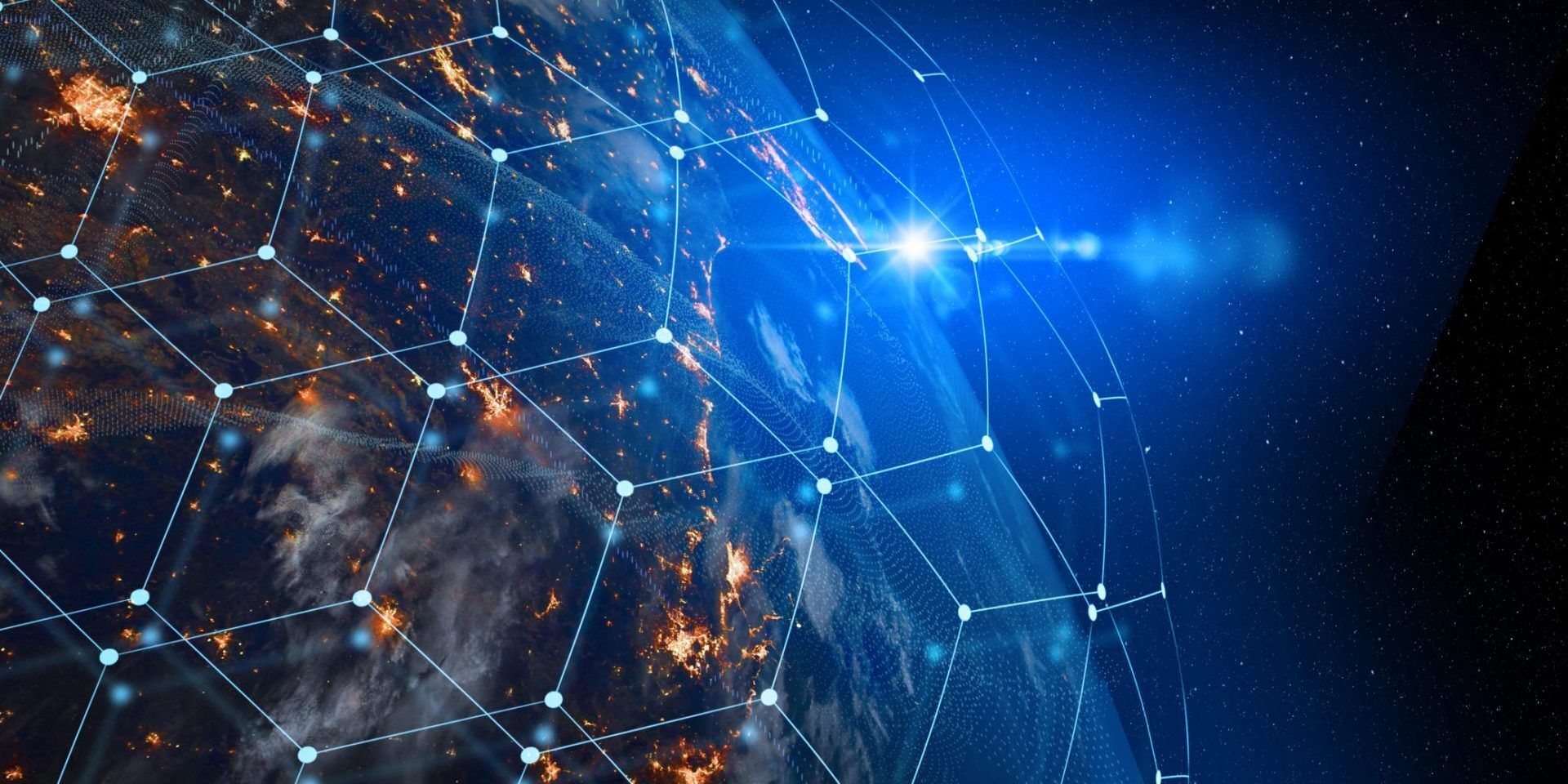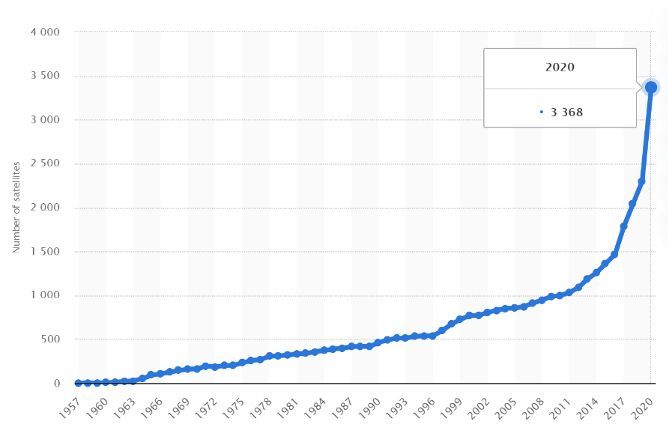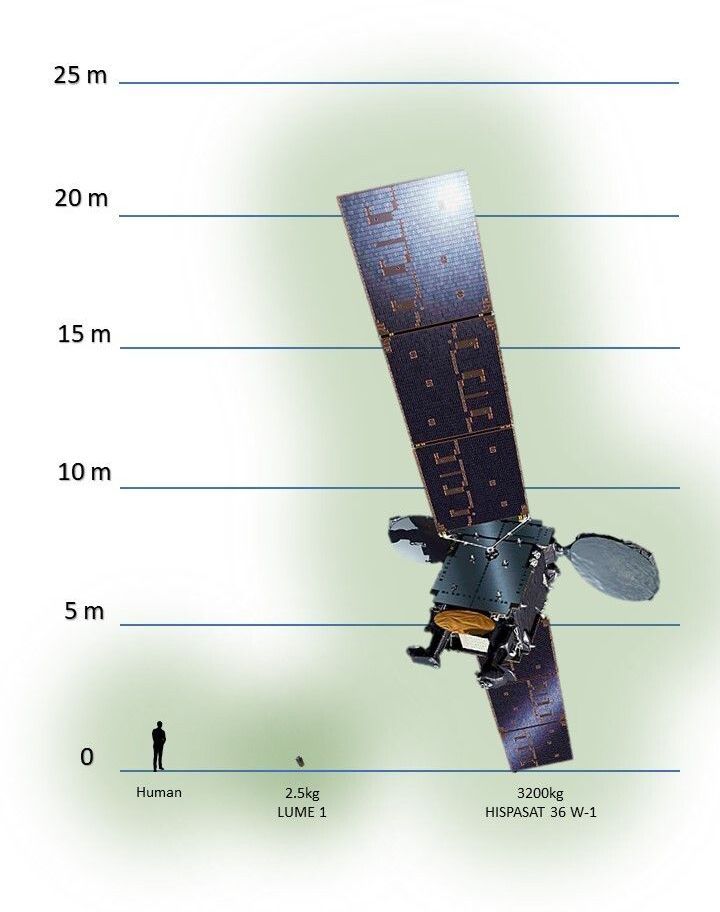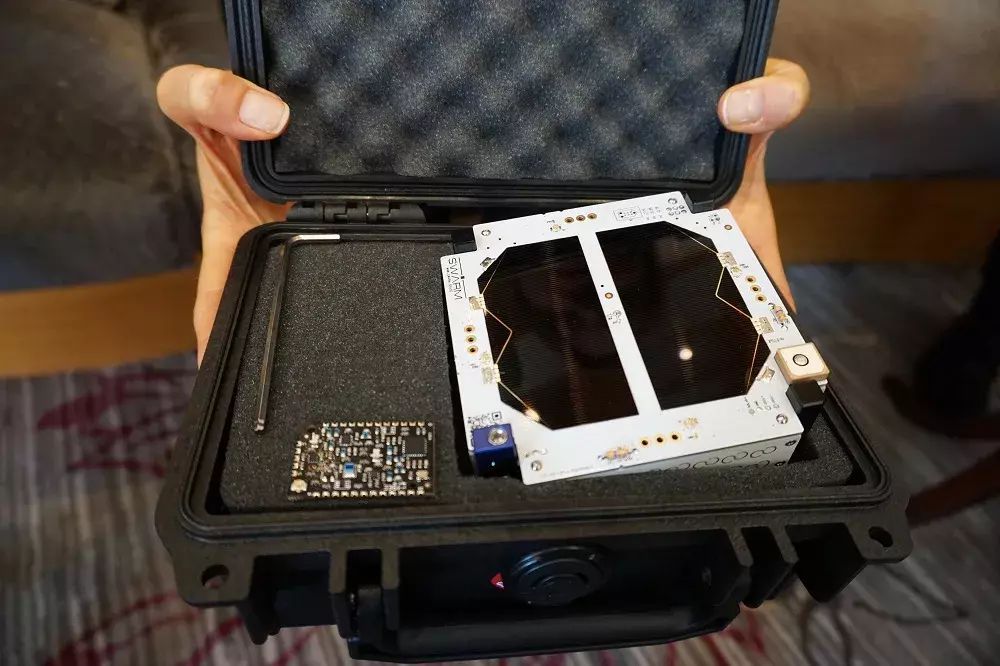Advancing the future with today’s innovative Satellite solutions
Date: March 9, 2023
With over half a million New Zealand businesses connected to some form of IoT and approximately 13.1 billion connected devices world-wide (42 billion installed and unconnected), it is not surprising that some form of global coverage will be a necessity in the future [1][2]. This is even more evident when we consider the inherent limitations of our more traditional terrestrial networks. Although we have relied on them to support most IoT applications, the fact remains that only 10% of earth's landmass is served by cellular towers (or 63% of the global population in 2021) making connectivity extremely difficult in remote areas [3][4].
Fortunately, the advent of cheaper and more abundant access to orbit, along with a new wave of miniature satellite technology, has led to an explosion of satellite launches on the scale of multiple mega-constellations [5][6]. This has allowed the number of active satellites to more than double in just a few years from 2017 to 2021 (fig. 1), and has been slowly but surely bringing more and more land-mass online [6].
Currently the largest use-space contender for satellite mega-constellation technologies are telecommunications providers such as
Starlink,
OneWeb or Amazon’s project
Kuiper. These companies are seeking to bring high-speed data and broadband
to isolated areas around the globe [7].
So what does this mean for more simple IoT device functionalities, such as assembly line monitors, weather sensors or tectonic plate movement detectors? Today only 2% of global satellite coverage is represented by IoT connectivity revenues [8] with the remainder providing a number of other essential services such as navigation, telephone calls, weather climate modeling and ever increasing broadband capabilities [6]. At this stage in time, utilizing a service such as
Starlink for these applications would be outrageously expensive.
This provides an opportunity for lBesser known companies, such as
Inmarsat,
Iridium,
ORBCOMM,
Globalstar, who account for over 80% of the IoT satellite market, to provide these essential services, and and are expected to hold approximately 20% of the global market by 2026 [8]. Revenues from these companies are expected to grow 14 times faster than revenues from traditional satellite use cases.
Technologies for Satellite IoT
There are three types of satellite technologies that support IoT, known as LEO, MEO and GEO (low, medium and geostationary earth orbit).
Despite the differences in orbital patterns, all three types of satellite networks generally transmit data the same way. To begin, an IoT device must transmit data to a satellite, and in some cases, it will also receive data/commands from the satellite. Upon receiving this data, the satellite transmits it to a ground station, which processes and forwards it via the internet to the end user, who is then able to organize and use it to manage their IoT project successfully.
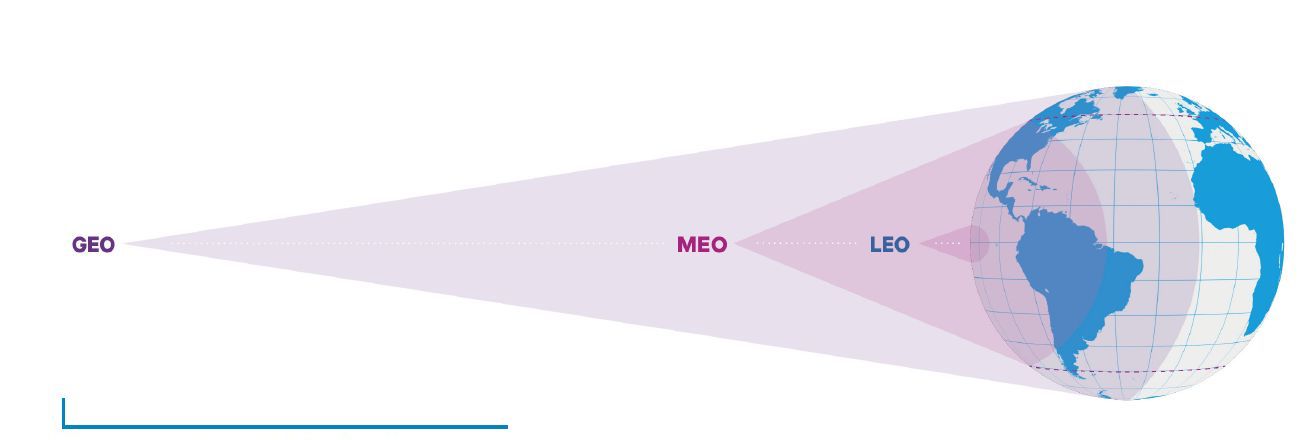
LEO Satellites
LEO satellites take up the bulk majority of IoT satellites in orbit today for a number of reasons:
- Low power: They are better suited for low power applications due to their relatively low deployment height (~200 - 2000 km). A shorter distance to earth means less power is required to transmit and receive a signal to earth. This also reduces propagation signal loss [9].
- Simple: Signal strength and power demands of transceivers are low, which simplifies the design process and reduces the complexity of components. As a result, revolutions have occurred in the industry such as the development of 'cube-sats', which allow for the mass production of commercial parts for cost-effective IOT satellite solutions. Cube-sats are currently the industry's most preferred and popular option [8].
- Low-cost: As the satellites are closer to earth, less resources are required to place them in orbit, thus enabling cheaper and faster deployment. This low orbit allows LEO satellites to make one orbit around the earth in 90 minutes. When set up in constellations, transmitted signals will always be picked up by one of the satellites in the orbital ‘mesh’.
Today, many would-be LEO satellite swarms for IoT are yet to be deployed, with only two thirds of operators having launched any form of satellite(s) into orbit. Overall there is demand for low cost satellite connectivity, however the economics can be challenging for these companies as satellite constellations tend to have high fixed costs and low variable costs. This makes it difficult for operators to repay initial costs and creates a tricky situation for investors. It is currently expected that many LEO satellite operators will cut their losses and decide not to launch. This has recently been the case for a few prospective operators such as Hiber, who have decided to rely on larger companies [9].
GEO Satellites
GEO or Geo-Stationary Equatorial Orbit satellites fit into a special category of applications because of the way they orbit the Earth. The clues to exactly how their orbit is different to other satellites can be found in the name ‘geo-stationary’, which means stationary orbit. This implies that to a ground observer, a GEO satellite appears stationary and does not move through the sky and around the planet, as a MEO or LEO would. Instead, GEO satellites are launched into orbit with a velocity that matches the spin of the earth in order to constantly remain above a set position on the Earth's surface [10].
Due to the Earth’s low speed of rotation (1670 km/h) [11], this type of configuration means that GEO satellites must be positioned much further away from Earth (~36,000km) [12]. This helps these relatively slow moving satellites to maintain orbit and also provides a large coverage area over the entirety of Earth’s disc. These factors make them ideal for applications that require little data interruption such as weather monitoring, television broadcasting and low-speed data communications [13].
IoT applications utilizing GEO satellites are uncommon because of a combination of factors surrounding their extremely high earth orbit such as:
- High latency (~250ms).
- Powerful signal amplification requirements.
- Satellite dish and signal line-of-sight required (i.e. must be clear of buildings or trees).
- High service costs due to more complex and longlife satellites.
- High launch costs.
One advantage of GEO satellites is that they typically hold large solar panels and powerful antennas. This means that they can be ideal for more critical IoT networks when factors such as ultra reliability, uninterrupted data links or large amounts of data transfer are required [14].
MEO Satellites
Medium earth orbit satellites (MEO) orbit somewhere in between GEO and LEO satellites from around 10,000km to 20,000km above the Earth. In comparison, MEO satellites are relatively rare and are almost exclusively used for GPS/Maritime navigation, communications and other similar services.
MEO satellites are typically considered a compromise between LEO and GEO satellites because of their 'medium' earth orbit, which offers low latency (LEO), a greater coverage area (GEO), and continuous coverage (GEO). For full geographic coverage, MEO constellations are still needed, but far fewer than LEO constellations [10].
With all this in mind, it may seem like MEO satellites could be a perfect compromise for IoT applications however, MEO satellite applications for IoT are relatively uncommon for many similar reasons as GEO satellites. These reasons range from high launch costs, high serviceability and larger, more complex satellites being required to transmit the greater distance [15].
What are Micro Satellites?
As LEO satellites are already inherently cheap to launch and manufacture, companies have turned to ‘shrunken’ satellite technologies referred to as anywhere between ‘micro’ and ‘femto’ satellites to keep the cost of satellite IoT services as low as possible.
The weight of a large satellite is typically around 1,000 kg, whereas the weight of a microsatellite can range anywhere between 10 and 100 kg. Even smaller satellites are known as Nano (1 - 10kg), Pico (0.1-1kg) and Femto (>0.1kg) [17]
In this field, Swarm Space operates a swarm of the smallest global coverage IoT satellites in orbit today (just 11 x 11 x 2.8cm per device, see figure 4). Each SwarmSpace satellite weighs approximately 400 grams, making it a 'pico' satellite. In addition to their small size, they are also incredibly optimized for IoT with the company often able to beat competitor pricing (e.g.
ORBCOMM or
Iridium) by a tenth or even a hundredth.
Currently a Swarm data plan for a single IoT device costs as little as $5 USD per month and provides 750 data packets per month of up to 192 bytes per packet and 60 downlink (2-way) data packets [18]. Granted this is an extremely small amount of information for modern day standards, it is more than enough for simple IoT applications such as taking weather measurements or transmitting location data.
Swarm Space has managed to fill an extremely trendy market as of late. Their success combined with rising product applications and the low cost of sending these tiny satellites to space has created a worldwide movement. Several companies are now actively manufacturing these tiny satellites, such as
Pumpkin Space Systems,
EnduroSat, or
AAC Clyde Space, and are likely to reap significant gains in the future.
Since all satellites are capable of transmitting and receiving such data, selecting the type of satellite network to run from ultimately falls upon the specific IoT application and depends on a number of factors such as service reliability, data importance, budget, device location and more.
Conclusion
As IoT applications become more prevalent in our everyday lives, satellite IoT is a rapidly growing industry. According to industry experts, the satellite IoT market is currently crowded and competitive with much of the competition having still not launched any form of tangible product. It has even been referred to as 'overheating' before even having a chance to grow and it is likely that only a few competitors will survive. With this in mind, the way of the future looks to be with LEO Satellite technologies and providers.
The key advantages of LEO Satellites means that these Satellites are used for a variety of applications. Their use is expected to continue growing in the coming years. The increasing number of LEO satellites in orbit is leading to new and innovative applications, which are closely linked to Global Positioning Systems (GPS) These Satellites have revolutionized the way we live and work, making it possible to providing mapping and tracking in real-time e.g. the location of ships and aircraft, vehicle navigation while traveling, and improve weather forecasting. The use of GPS and satellites has become an essential aspect of modern life and has far-reaching applications in fields such as agriculture, transportation, and military operations.
Here at Beta Solutions we have experience in designing electronic solutions that integrate GPS functionality to provide tracking, mapping or location based services. Get in touch if you have a project that may require these capabilities.
References:
[1] (2021). INTERNET OF THINGS. Spark. https://www.spark.co.nz/iot/home/?cq_src=google_ads&cq_cmp=11350525164&cq_term=iot&cq_plac=&cq_net=g&cq_plt=g&gclid=CjwKCAjw7p6aBhBiEiwA83fGujYrUcYPVmvns6Y9vRWNkDufbPuAexLZETExB5SNO2kbsqW-AFqRbxoChkwQAvD_BwE&gclsrc=aw.ds
[2] G, N. (2022). How Many IoT Devices Are There in 2022? [All You Need To Know]. TechJury. https://techjury.net/blog/how-many-iot-devices-are-there/#gref
[3] The World’s Problem & Lynk’s Solution. Lynk World. https://lynk.world/our-technology
[4] Percentage of global population accessing the internet from 2005 to 2021, by market maturity. Statista. https://www.statista.com/statistics/209096/share-of-internet-users-in-the-total-world-population-since-2006/
[5] (2018). How Small Satellites Are Providing Low-Cost Access to Space. IEEE. https://site.ieee.org/sb-uol/how-small-satellites-are-providing-low-cost-access-to-space/
[6] (2021). The Impact of Mega-Constellations on Astronomy – Zooniverse Project. Staffblogs. https://staffblogs.le.ac.uk/physicsastronomy/2021/08/05/the-impact-of-mega-constellations-on-astronomy-zooniverse-project/
[7] (2022). How Starlink Satellites Could Affect IoT. Link-Labs. https://www.link-labs.com/blog/how-starlink-satellites-could-affect-iot
[8] Pasqua, E. (2022).
Satellite IoT connectivity: Three key developments to drive the market size beyond $1 billion. IoT Analytics.
https://iot-analytics.com/satellite-iot-connectivity/
[9] Hatton, M. (2022, March). The LEO satellite space will be overcrowded, at least for IoT. transformainsights.com. https://transformainsights.com/blog/leo-satellite-iot-overcrowded#:~:text=The%20IoT%20focused%20LEO%20roll,surface%2C%20but%20are%20constantly%20moving.
[10] (2022). Types of satellite networks making IoT solutions a reality. IoTm2mCouncil. https://www.iotm2mcouncil.org/iot-library/articles/smart-industries/types-of-satellite-networks-making-iot-solutions-a-reality/#:~:text=Types%20of%20satellite%20connectivity%20available,orbit%20(MEO)%20and%20geostationary.
[11] (n.d.). Challenge 10 – Shadow Speed and Earth’s Rotation. Eclipse2017.Nasa.Govt. https://eclipse2017.nasa.gov/shadow-speed-and-earths-rotation#:~:text=Earth%20rotates%20once%20every%2023h,h%20%3D%201%2C674%20km%2Fhr.
[12] (n.d.). GEO, MEO, and LEO. SatelliteToday. https://www.satellitetoday.com/content-collection/ses-hub-geo-meo-and-leo/
[13] Kohrs, R. (2010). Geostationary Satellites. NOAA. https://sos.noaa.gov/catalog/datasets/geostationary-satellites/#:~:text=Geostationary%20satellites%20are%20a%20key,on%20Earth%20all%20the%20time.
[14] Kostina, O. (2022). Types of Satellite Networks Used in IoT Solutions. IoT For All. https://www.iotforall.com/types-of-satellite-networks-used-in-iot-solutions#:~:text=GEO%2DSatellites&text=Typically%2C%20a%20GEO%2Dsatellite%20network,be%20sent%20up%20and%20down
[15] Heukelman, C. (2018, June 26).
LEO vs. MEO vs. GEO Satellites: What's the Difference? symmetryelectronics. Retrieved from https://www.symmetryelectronics.com/blog/leo-vs-meo-vs-geo-satellites-what-s-the-difference-symmetry-blog/
[16] Blackman, J. (2019, November). What is LEO, and how will LEO satellites transform the IoT sector? rcrwireless.com.
https://www.rcrwireless.com/20191104/fundamentals/what-is-leo-and-how-will-leo-satellites-transform-iot
[17] Geospatial World. (2016, May 26). How are small satellites changing the earth observation industry? [Video]. YouTube. https://www.youtube.com/watch?v=vd4oecayaMk
[18] (n.d.). SWARM M138 MODEM. SwarmSpace. https://swarm.space/product/swarm-m138-modem/#popup1


